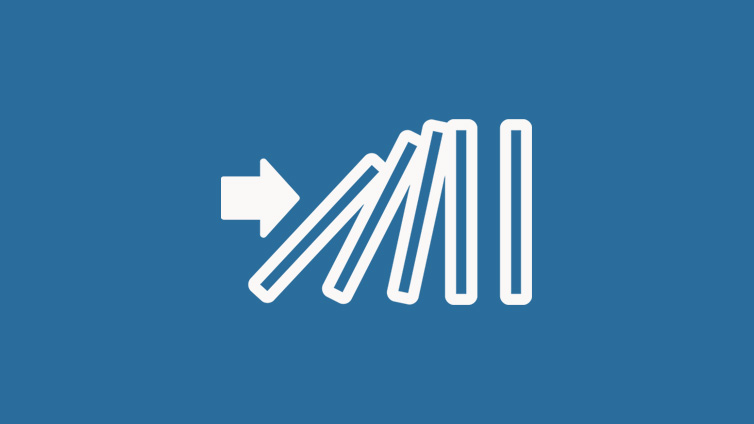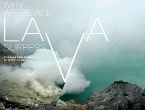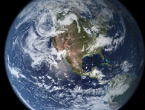4.2 Why Is Plate Tectonics Important?
-
2 Videos
-
2 Activities
-
1 Article
-
1 Closer
Introduction
In the last lesson, students learned that the interior of the Earth changed over time to give the planet the unique layering that it currently possesses. In this lesson, students will learn that the surface of the Earth changes as well. The high temperatures that caused the differentiation of the Earth’s layers continue even today. In a process known as plate tectonics, the heat and movement of the mantle floating under the Earth’s crust drive the movement of the Earth’s crust over its surface. The slow shifting of these tectonic plates explains the shape of our continents as well as mountain ranges and traumatic events like earthquakes.
More about this lesson
- Use evidence to explain how the Earth and its atmosphere developed and changed over time.
- Explain the basic mechanisms and key pieces of evidence for plate tectonics, and how plate tectonics impacts life on Earth.
Crash Course: The Solar System & the Earth
Vocab Terms:
- comet
- differentation
- nebula
- plate tectonics
- solar system
- supernova
Purpose
Crash Course Big History Episode #3. This video provides a review of the key lessons about formation of the Earth and Solar System and the early history of the Earth, and then provides a brief introduction to plate tectonics, the focus of this lesson.
Crash Course: The Solar System & the Earth (14:00)
Key Ideas
Process
Preview
Based on the discovery and study of exoplanets, it is clear that the formation of solar systems and planets is pretty common in the Universe. The Universe contains many planets that are not in our solar system, but our solar system, and the planets in it, still provide us with much of our best evidence for the story of planet formation.
Key Ideas—Factual
Think about the following questions as you watch the video:
- Why is Pluto no longer considered a planet?
- What does it mean to say that the Sun is a second generation star?
- What were some of the materials orbiting the Sun after it formed, and why did the dust begin to stick together (that is, accrete)?
- How long did our Solar System take to get to the form it has today?
- What happened to the heavier metals when the planet formed?
- What happened to the gases that rose up from beneath the Earth’s crust and were released in volcanic eruptions?
- The conditions of the Hadean eon were awful, but they did help make the Earth more chemically complex. How?
- When and why did the oceans form?
- Why is the Earth compared to an egg when the discussion of plate tectonics begins in this video?
- What are some of the benefits of plate tectonic activity?
- Why has our knowledge of planets and solar systems changed in the last 20 years?
Thinking Conceptually
All of the processes described in this video take lots of time: solar system formation, planet formation, the Moon moving away from the Earth, plate tectonic movement. How concerned do you think you should be about processes that take so long? Should geological processes like these really matter to you since it’s not likely that you will be able to perceive them over the course of your lifetime?
Summary
The formation of the Sun made possible the formation of our Solar System. The circumstances of the Earth’s formation and its early history created the conditions that made life possible. The fact that the Sun was a second generation star, meaning that a greater diversity of elements was available for the formation of the Earth, is just one of the many results of this process that affected the ability of life to develop on Earth.
Our Shifting Globe
Vocab Terms:
- crust
- earthquake
- plate tectonics
- ridge
- subduction zone
Summary
The movement of the continents, driven by plate tectonics, is critical to understanding the Big History story. Changes to the planet occur really, really slowly. Over very, very long periods of time, the results are dramatic. The movement of the tectonic plates shapes our continents and the land around us. At the same time, the movement of tectonic plates alternately exposes and conceals mineral deposits that we use every day.
Our Shifting Globe (4:27)
Key Ideas
Purpose
The surface of the Earth is changing all the time. It’s now possible for scientists to determine how the tectonic plates on the surface of the Earth have moved over time, and write the history of the Earth. Understanding how and why plates move is important for understanding both the Earth’s history and the changing conditions in the biosphere.
Process
Preview
The surface of the Earth is constantly moving. It moves very slowly, but over really long periods of time the effects are dramatic. Starting from a single continent called Pangaea, plate tectonics moved the Earth’s plates until we ended up with the configuration of continents we see today. These same processes created mountains and are responsible for earthquakes and volcanoes too.
Key Ideas – Factual
Think about the following questions as you watch the video:
- What is a tectonic plate and what are some of the characteristics of the Earth’s plates?
- What special role do oceanic plates play in the story of the Earth?
- What drives the movement of the tectonic plates?
- What causes earthquakes?
- What did the surface of the Earth look like 250 million years ago?
- How long did it take for the Earth to take on the appearance it has today, and how fast did the plates move?
Thinking Conceptually
In this video, David Shimabukuro said that the Earth’s plates move at about the same speed as your fingernails grow. Can you think of other things in nature that change this slowly?
Causation – Plate Tectonics
Preparation

Purpose
In this activity, you’ll investigate how shifting tectonic plates caused Mount Fuji to form, and you’ll then think about the effects of its formation. Thus far in the causation practice progression, you’ve been working on categorizing causes by time. You’ll expand upon your causation skills in this activity by categorizing causes by both time and type, and then you’ll categorize effects by type. This will help you understand how historians often group different causes and effects together based on categories like politics, economics, or culture to analyze a historical event or process. You’ll also be introduced to the acronym PIECES (political, innovation, economic, cultural, environmental, and social), which will help remind you of some of the main categories historians use to analyze and categorize historical events.
Practices
Disciplines, scale
Constructing big historical narratives that span millions of years requires historians to rely on experts in other disciplines. When it comes to Earth’s history, historians draw from the knowledge of geologists (who study Earth’s physical processes), climatologists (who study climate and weather), geographers (who study human-environment relationships), and demographers (who study characteristics of human populations). Historians integrate knowledge across multiple disciplines to examine what caused change over huge scales of time!
Process
In this activity, you will categorize Causes Cards based on a social media thread about Mount Fuji created by Big History teacher Rachel Hansen. You will classify each social media message as a cause or effect, based on when Mount Fuji was formed, and then you’ll learn how to classify causes by type. To wrap up, you’ll produce you own social media message (280 characters or less) summarizing what you think is the most important cause or effect of Japan’s Mount Fuji.
Mount Fuji is one of the most well-known and most-visited volcanoes in the world. How did this happen? Historians often investigate how and why things change over very long periods of time. Sometimes it’s helpful to zoom out and think about long-term causes and effects over millions of years to help explain a historical event or process. Mount Fuji is the second-tallest active volcano in Asia. It last erupted in 1707 and is a cultural icon of Japan. Mount Fuji’s symmetry makes it attractive to artists and visitors. It was frequently included in Japanese art after the 1600s and is a popular tourist destination today.
- Get into small groups and take out the Causes Cards and the Causation Tool, which is included in the Causation – Plate Tectonics worksheet. Classify the cards as causes or effects, with the historical event being the creation of Mount Fuji. You can use the tool as an organizer to help you categorize your causes and effects.
- Once you’ve decided on causes versus effects, divide the causes into long-term, intermediate-term, or short-term causes of Mount Fuji’s formation.
- Now, you’re going to further categorize the causes and effects by using what we call type. Type classifies the causes and effects into specific categories—historians do this because sometimes there are so many causes and effects for an event that they need to focus in on different categories to be able to reasonably analyze the historical event. Talk through the types of causes and effects with your class. Note: There is a legend on the bottom of the Causation Tool that will help remind you of the types:
- (P) Political – What type of government, organization, or power structure was there? Who was in charge? Did people vote or have a say?
- (I) Innovation – What did they invent? Were there any new developments or technologies?
- ($) Economic – What jobs were there? Did they use money? Did they trade?
- (C) Cultural – What/whom did they worship? What/whom did they believe in? Did they have written language? Did they leave any artifacts behind, such as art, customs, sports, dress, language, music, dance, foods, celebrations?
- (E) Environmental – How did they attempt to control or use the environment? What impact did the land, water, and nature around them have on the way they lived?
- (S) Social – Were there different roles for men and women? Did people live in family units? Did they interact with other groups? Did they have a social structure (enslaved, priests, kings)?
- Once you’ve discussed them, work together to identify the type of each cause and effect using the information above to help you. Note: You only need to mark each cause or effect with the appropriate type letter.
- Finally, look at what you wrote on the Causation Tool, and create a social media message that makes a claim about the most important cause or effect of Mount Fuji’s creation. Be ready to justify your reason to the class. You can create the social media message on paper using the template provided or create the message on your computer if your teacher shares the electronic template.
“Why We're All Lava Surfers”
Vocab Terms:
- glacier
- lava
- plate tectonics
- ridge
- trench
- volcano
Preparation


Summary
Volcanoes and earthquakes are evidence that the surface of the Earth changes. They testify to the fact that the Earth’s plates collide, and the energy these collisions generate can have very devastating effects on the lives of humans.
Purpose
The movement of the Earth’s plates is a slow process, and the plates don’t move enough during a human lifetime for us to see significant changes in the layout of the Earth’s plates. Earthquakes and volcanoes happen as a result of these plate movements, and these are things that all humans are familiar with, either from actually observing them or seeing them on television or the Internet. This reading draws a connection between these familiar events and the evidence for plate tectonics.
Process
Skimming for Gist
Seeing the results of plate tectonics “up close and personal” can be a serious adventure. Writer Peter Stark travels to Iceland, Indonesia, and Yellowstone National Park to see the results firsthand. His travels were sometimes exciting, sometimes unnerving, and a couple of times, downright scary. All of the sites he visits provide evidence for the idea that the motion of the Earth is being driven by plate tectonics.
Understanding Content
As you read the article more carefully a second time through, think about the following questions.
- Why does Peter Stark call us “lava surfers”?
- Why are there so many earthquakes in Indonesia?
- What creates the geysers at Yellowstone National Park?
- Why does Stark describe the Earth as “new” as he views the volcano?
Thinking Conceptually
After you’ve finished your third close read, respond to these questions: If we are all lava surfers, why do some parts of the Earth have relatively “small waves,” but other places, like Indonesia, have “big waves”?
Biography of a Continent
Preparation


Purpose
The early Earth was an inhospitable place. It wasn’t until the start of the Archaean eon, almost 700 million years after the Earth was created, that rocks formed, which made possible the development of the massive formations we call continents. Each continent is different in important respects from the others. In this activity you and your group will investigate one of the seven continents and present your findings about what makes it unique to the class. This will help you see how the continents are similar and different.
Practices
Scale
While not directly related to scale, as part of this activity, you’ll have an opportunity to compare elements of geologic and human history on different continents. In doing this, you can draw comparisons at different spatial scales. As you learn about the different continents, think about the similarities and differences that exist across local, regional, and national scales.
Process
Your teacher will assign you to a group and assign your group a continent to focus on. Your job will be to investigate the continent’s characteristics and its history—both its geologic history and its human history. You will be looking to answer these questions about your continent: What makes it different from the others? When did it assume the shape and location it has today? When and where did its name come from? What is its topography? What plant and animal life characterize the continent? How have Earth processes, such plate tectonics, given rise to the geological, geographic, and biological features we see today? The list of questions you should address, outline maps of each continent, and some suggested websites to visit can be found in the Biography of a Continent Worksheet. Your group will be expected to research its continent and create a map highlighting its most important features. Once each group has finished its research, you’ll be expected to present your continent’s story to the class.
